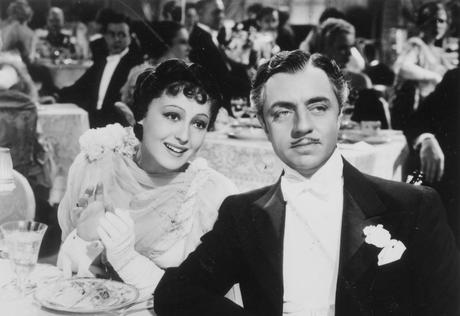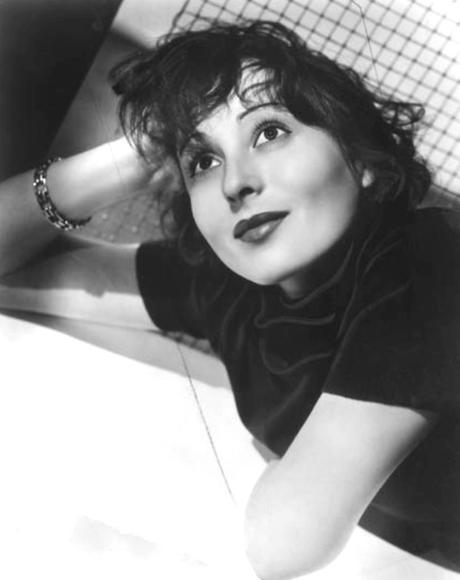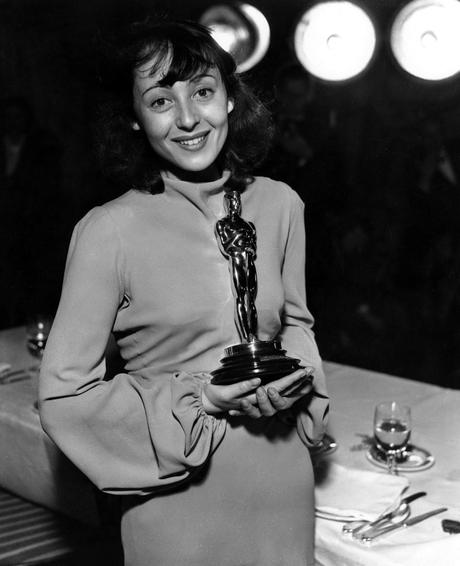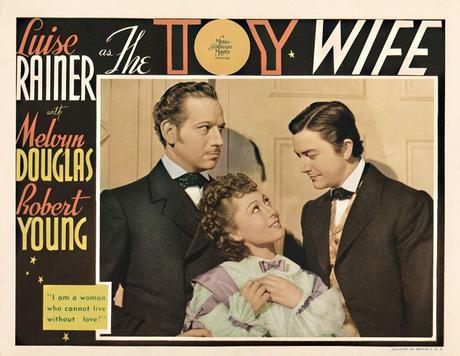
Luise Rainer occupies a very unique place in film history. While her Hollywood career was far from prolific, it is extremely notable. Today, she is perhaps most widely remembered for being the first person to win back-to-back acting Oscars for her roles in 1936’s The Great Ziegfeld and 1937’s The Good Earth. That first Oscar win for The Great Ziegfeld came just a little over a year after she made her film debut alongside William Powell in Escapade, marking an extremely meteoric rise to stardom. But almost as quickly as her career began, it began to come to an end and in 1938, she was one of the twelve stars dubbed “Box Office Poison” by the Independent Theater Owner’s Association. Two years later, she left Hollywood behind.
It’s extremely difficult to talk about Luise Rainer without talking about Greta Garbo. Not only were Garbo and Rainer both under contract to MGM at the same time, Rainer was effectively brought to MGM for the purpose of turning her into a successor to Garbo.
Throughout the 1930s, Greta Garbo was one of the biggest names under contract to MGM. But she notoriously did not play the conventional movie star game. She didn’t answer fan mail or sign autographs and very rarely spoke to the press. Even though she was nominated for multiple Academy Awards and won an honorary Oscar, she never once attended a ceremony. She very rarely appeared at other industry events like film premieres. However, being such a big star also gave her the power to make life more difficult for Louis B. Mayer. Garbo fought to be paid what she knew she deserved and to have more control over the films she made.
Since Garbo played by her own rules, Mayer was interested in finding someone else who had the same type of appeal that Greta Garbo had, but who would also be more willing to do the sorts of things that movie stars typically do. When Rainer caught the attention of an MGM talent scout, Mayer thought she was exactly what he was looking for in that regard. However, this was a plan that would later completely backfire on him.

When Luise Rainer came to Hollywood in 1935, MGM got right to work trying to mold her into the image they wanted her to have. As she was originally from Austria, MGM had her work with coaches to improve her English and she made Escapade shortly after arriving in Hollywood, a remake of a film she had made while working in Europe. Even though she had starred in the original version of that movie, she only ended up starring in Escapade after Myrna Loy dropped out. But it all worked out because Rainer made a great impression on audiences and critics.
On the surface, it looked like Luise Rainer was poised to have a storybook tale of Hollywood success. But she wasn’t particularly keen on the idea of doing films in the first place and once MGM’s publicity machine kicked into high gear, she quickly started becoming uncomfortable with her new role as movie star. And with her two subsequent films, The Great Ziegfeld and The Good Earth, and the two Oscar wins that came with them, she had become even more dissatisfied. (For more on the role MGM’s campaigning efforts played in her two wins, I highly recommend Be Kind Rewind’s video essay on the subject.)
While Garbo rarely spoke to the press, Luise Rainer would do interviews — but she didn’t make any false pretenses about loving Hollywood. Interviews weren’t her thing and neither were big industry events. She went to the Oscar ceremonies to accept her awards, but in 1938, she had to be dragged there.

When she won her Academy Award for The Good Earth, she had fully intended on staying home that night. But when Louis B. Mayer found out she would be winning that night and she wasn’t there, someone was sent to her home to get her to the ceremony. In a recap of the ceremony, Variety wrote she was, “rather hurriedly dressed in a long-sleeved pink crepe gown. She did not bother with makeup or pause to more than comb her hair.” On top of everything else, her personal life was very strained at the time. A Guardian article quotes a 1999 interview in which she explained that on the night of the 1938 Academy Awards ceremony, she had just had a fight with Clifford Odets, her husband at the time, and he had to drive her around the building three times before she had composed herself enough to go inside.
In later years, Luise Rainer would say that winning back-to-back Oscars felt like a curse for her film career because it made the studio think they could throw her in anything and she would make it work. Looking back on her career, she would often explain that at MGM, she felt like she was just another tool in the factory without any agency over the direction of her career. She longed to play people like Madame Curie and to do movies like For Whom the Bell Tolls, but she was never able to.
When she went to Louis B. Mayer and told him that her “source had dried out” and she wanted to quit, it led to an argument that involved Mayer telling her, “We made you and we can kill you.” The films she made at MGM after The Good Earth were rather lackluster and Rainer herself said of them, “…except for The Great Waltz, the stories and the ambiance was not very good. I didn’t like it, and I wanted to get back to Europe.”

1938 was the last year Luise spent at MGM and by the time the Box Office Poison ad was published, her films had indeed taken a downturn at the box office. As lavish as The Great Ziegfeld was, it still managed to make a profit for MGM. The Good Earth, while very successful, was simply too expensive to have any hope of turning a profit. Her next two films, 1937’s The Emperor’s Candlesticks and Big City, were both profitable, if not as acclaimed as her previous films. But 1938’s The Toy Wife, The Great Waltz, and Dramatic School all failed to break even. She would describe being cast in The Toy Wife as being a failed punishment because, while it wasn’t a good movie, she at least greatly enjoyed working with Melvyn Douglas. In 1940, she moved from Los Angeles to New York City and made one more movie, 1943’s Hostages, for Paramount before taking an extended break from film acting.
Luise Rainer’s career is a prime example of how powerful MGM’s approach to developing new stars could be — and how powerful the system could be if turned against a star who didn’t stay in line. However, she also acknowledged that her film career ended because she wanted it to end. In 2010, Vanity Fair invited Luise Rainer to answer the Proust Questionnaire in honor of her hundredth birthday. When asked what she considered to be her greatest achievement, she said, “I could say such and such a film or something, but I can also say that it has been to overcome situations that would make me unhappy.”
